I am a professor for machine learning and data science at the University of Applied Sciences Berlin (HTW Berlin). My research activities span areas such as learning with limited data, building robust visual recognition models for quality control and medical image analysis, as well as combining annotation and learning workflows.
Previously, I was leading the machine learning team at the corporate research department of the ZEISS Group develop machine learning solutions for a wide range of products. Furthermore, I have been a lecturer in the computer vision group at the Friedrich Schiller University of Jena (Germany) leading the machine learning research activities and I worked as a PostDoc in the computer vision group of Trevor Darrell at ICSI/EECS (UC Berkeley, California).
Selected Publications
2025
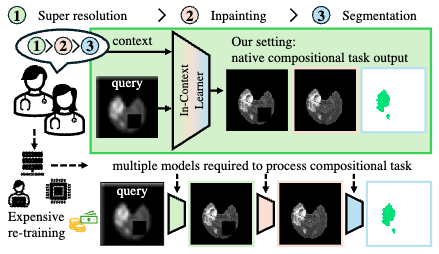
|
Is Visual in-Context Learning for Compositional Medical Tasks within Reach?.
International Conference on Computer Vision (ICCV). 2025. accepted for publication 
@inproceedings{Reiss2025,
title = {Is Visual in-Context Learning for Compositional Medical Tasks within Reach?},
author = {Reiß, Simon and Marinov, Zdravko and Jaus, Alexander and Seibold, Constantin and Sarfraz, M Saquib and Rodner, Erik and Stiefelhagen, Rainer},
booktitle = {International Conference on Computer Vision (ICCV)},
year = {2025},
}
|
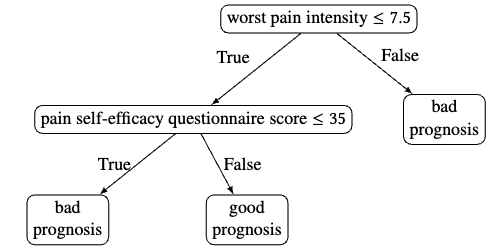
|
Oh LLM, I'm Asking Thee, Please Give Me a Decision Tree: Zero-Shot Decision Tree Induction and Embedding with Large Language Models.
Proceedings of the KDD 2025 Conference. 1-12. 2025. accepted for publication 


@inproceedings{Knauer2025KDD,
author = {Knauer, Ricardo and Koddenbrock, Mario Lukas and Wallsberger, Raphael and Brisson, Nicholas M. and Duda, Georg N. and Falla, Deborah and Evans, David W. and Rodner, Erik},
title = {Oh LLM, I'm Asking Thee, Please Give Me a Decision Tree: Zero-Shot Decision Tree Induction and Embedding with Large Language Models},
booktitle = {Proceedings of the KDD 2025 Conference},
year = {2025},
volume = {2},
pages = {1-12},
doi = {10.1145/3711896.3736818},
}
|
2023
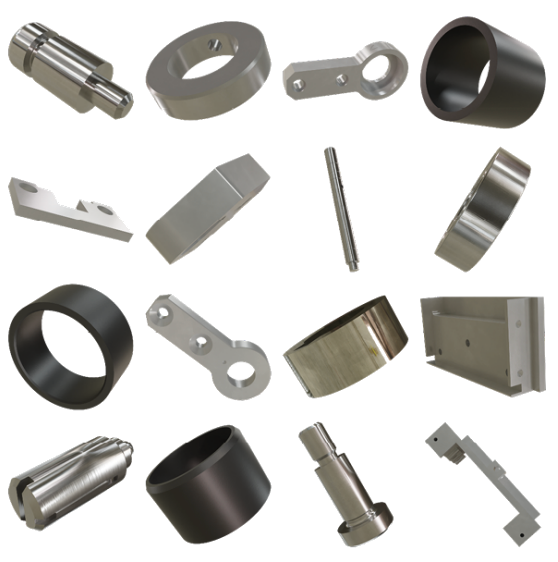
|
CAD Models to Real-World Images: A Practical Approach to Unsupervised Domain Adaptation in Industrial Object Classification.
European Conference on Machine Learning and Principles and Practice of Knowledge Discovery in Databases (ECML-PKDD), Workshop Adapting to Change: Reliable Learning Across Domains. 2023. 


@inproceedings{ritter2023cad,
title = {CAD Models to Real-World Images: A Practical Approach to Unsupervised Domain Adaptation in Industrial Object Classification},
author = {Ritter, Dennis and Hemberger, Mike and Hönig, Marc and Stopp, Volker and Rodner, Erik and Hildebrand, Kristian},
booktitle = {European Conference on Machine Learning and Principles and Practice of Knowledge Discovery in Databases (ECML-PKDD), Workshop Adapting to Change: Reliable Learning Across Domains},
year = {2023},
doi = {https://doi.org/10.48550/arXiv.2310.04757},
}
|
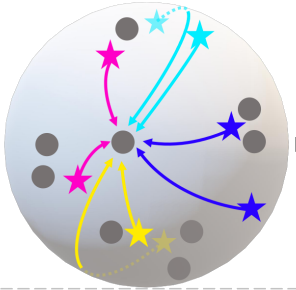
|
Decoupled Semantic Prototypes enable learning from diverse annotation types for semi-weakly segmentation in expert-driven domains.
Proceedings of the IEEE/CVF Conference on Computer Vision and Pattern Recognition (CVPR). 15495-15506. 2023. 


@inproceedings{reiss2023decoupled,
title = {Decoupled Semantic Prototypes enable learning from diverse annotation types for semi-weakly segmentation in expert-driven domains},
author = {Reiß, Simon and Seibold, Constantin and Freytag, Alexander and Rodner, Erik and Stiefelhagen, Rainer},
booktitle = {Proceedings of the IEEE/CVF Conference on Computer Vision and Pattern Recognition (CVPR)},
pages = {15495--15506},
year = {2023},
}
|
2022
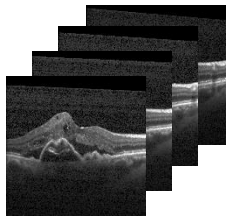
|
Graph-constrained contrastive regularization for semi-weakly volumetric segmentation.
Proceedings of the European Conference on Computer Vision (ECCV). 401-419. 2022. 


@inproceedings{reiss2022graph,
title = {Graph-constrained contrastive regularization for semi-weakly volumetric segmentation},
author = {Reiß, Simon and Seibold, Constantin and Freytag, Alexander and Rodner, Erik and Stiefelhagen, Rainer},
booktitle = {Proceedings of the European Conference on Computer Vision (ECCV)},
pages = {401--419},
year = {2022},
}
|
2021
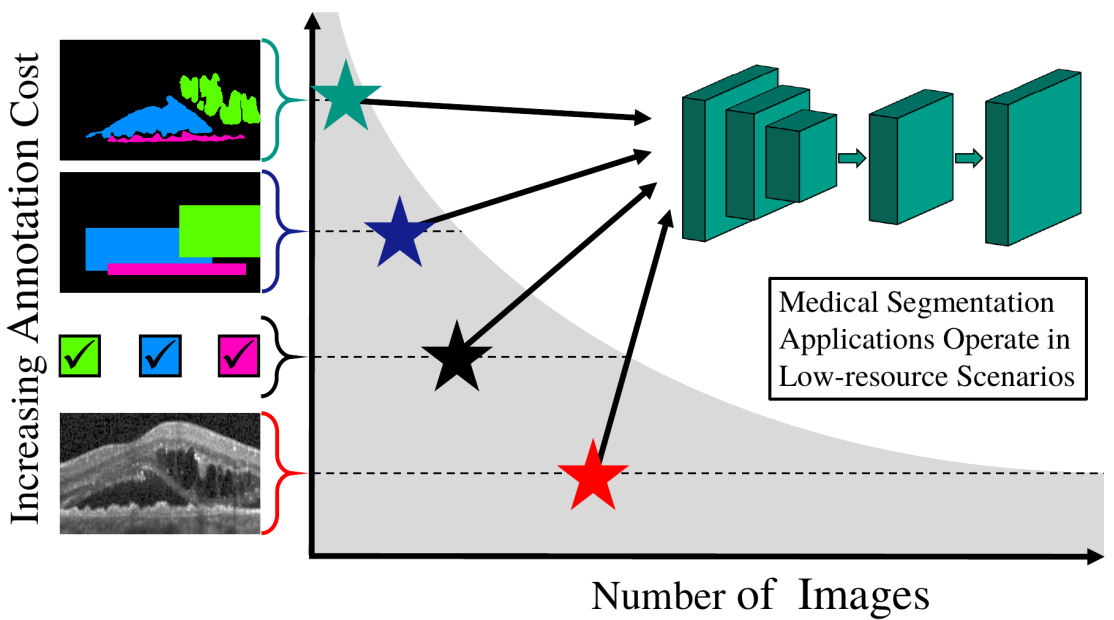
|
Every annotation counts: Multi-label deep supervision for medical image segmentation.
Proceedings of the IEEE/CVF conference on computer vision and pattern recognition (CVPR). 9532-9542. 2021. 


@inproceedings{reiss2021every,
title = {Every annotation counts: Multi-label deep supervision for medical image segmentation},
author = {Reiß, Simon and Seibold, Constantin and Freytag, Alexander and Rodner, Erik and Stiefelhagen, Rainer},
booktitle = {Proceedings of the IEEE/CVF conference on computer vision and pattern recognition (CVPR)},
pages = {9532--9542},
year = {2021},
}
|
2020
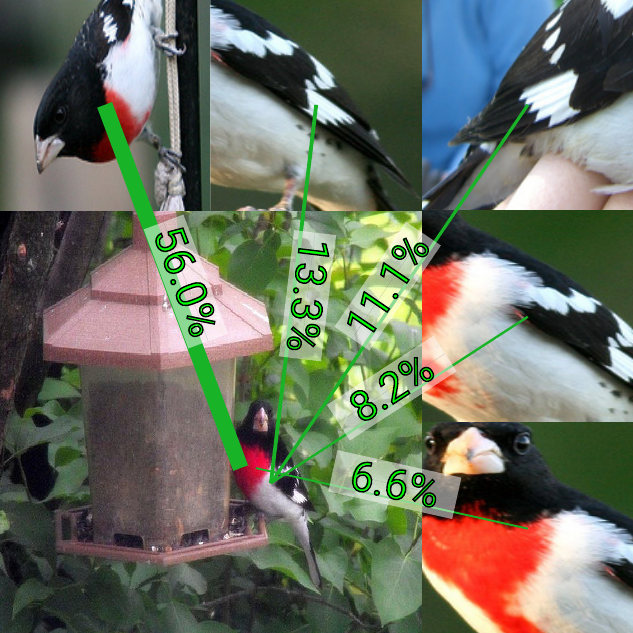
|
The whole is more than its parts? From explicit to implicit pose normalization.
IEEE Transactions on Pattern Analysis and Machine Intelligence. 42(3): 749-763. 2020.  abstract
abstract
Abstract: Fine-grained classification describes the automated recognition of visually similar object categories like birds species. Previous works were usually based on explicit pose normalization, i.e., the detection and description of object parts. However, recent models based on a final global average or bilinear pooling have achieved a comparable accuracy without this concept. In this paper, we analyze the advantages of these approaches over generic CNNs and explicit pose normalization approaches. We also show how they can achieve an implicit normalization of the object pose. A novel visualization technique called activation flow is introduced to investigate limitations in pose handling in traditional CNNs like AlexNet and VGG. Afterward, we present and compare the explicit pose normalization approach neural activation constellations and a generalized framework for the final global average and bilinear pooling called α-pooling. We observe that the latter often achieves a higher accuracy improving common CNN models by up to 22.9%, but lacks the interpretability of the explicit approaches. We present a visualization approach for understanding and analyzing predictions of the model to address this issue. Furthermore, we show that our approaches for fine-grained recognition are beneficial for other fields like action recognition. 
@article{Simon19_Implicit,
author = {Marcel Simon and Erik Rodner and Trevor Darell and Joachim Denzler},
journal = {IEEE Transactions on Pattern Analysis and Machine Intelligence},
title = {The whole is more than its parts? From explicit to implicit pose normalization},
year = {2020},
volume = {42},
number = {3},
pages = {749-763},
doi = {10.1109/TPAMI.2018.2885764},
}
|
2019
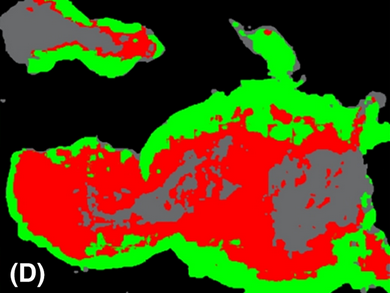
|
Fully Convolutional Networks in Multimodal Nonlinear Microscopy Images for Automated Detection of Head and Neck Carcinoma: A Pilot Study.
Head and Neck. 41(1): 116-121. 2019. 
 abstract
abstract
Abstract: A fully convolutional neural networks (FCN)-based automated image analysis algorithm to discriminate between head and neck cancer and noncancerous epithelium based on nonlinear microscopic images was developed. Head and neck cancer sections were used for standard histopathology and co-registered with multimodal images from the same sections using the combination of coherent anti-Stokes Raman scattering, two-photon excited fluorescence, and second harmonic generation microscopy. The images analyzed with semantic segmentation using a FCN for four classes: cancer, normal epithelium, background, and other tissue types. A total of 114 images of 12 patients were analyzed. Using a patch score aggregation, the average recognition rate and an overall recognition rate or the four classes were 88.9\% and 86.7\%, respectively. A total of 113 seconds were needed to process a whole-slice image in the dataset. Multimodal nonlinear microscopy in combination with automated image analysis using FCN seems to be a promising technique for objective differentiation between head and neck cancer and noncancerous epithelium. 
@article{Rodner19_Fully,
author = {Erik Rodner and Thomas Bocklitz and Ferdinand von Eggeling and Günther Ernst and Olga Chernavskaia and Jürgen Popp and Joachim Denzler and Orlando Guntinas-Lichius},
title = {Fully Convolutional Networks in Multimodal Nonlinear Microscopy Images for Automated Detection of Head and Neck Carcinoma: A Pilot Study},
journal = {Head and Neck},
year = {2019},
volume = {41},
number = {1},
pages = {116--121},
doi = {10.1002/hed.25489},
}
|

|
Detecting Regions of Maximal Divergence for Spatio-Temporal Anomaly Detection.
IEEE Transactions on Pattern Analysis and Machine Intelligence. 41(5): 1088-1101. 2019. (Pre-print published in 2018.) 

 abstract
abstract
Abstract: Automatic detection of anomalies in space- and time-varying measurements is an important tool in several fields, e.g., fraud detection, climate analysis, or healthcare monitoring. We present an algorithm for detecting anomalous regions in multivariate spatio-temporal time-series, which allows for spotting the interesting parts in large amounts of data, including video and text data. In opposition to existing techniques for detecting isolated anomalous data points, we propose the "Maximally Divergent Intervals" (MDI) framework for unsupervised detection of coherent spatial regions and time intervals characterized by a high Kullback-Leibler divergence compared with all other data given. In this regard, we define an unbiased Kullback-Leibler divergence that allows for ranking regions of different size and show how to enable the algorithm to run on large-scale data sets in reasonable time using an interval proposal technique. Experiments on both synthetic and real data from various domains, such as climate analysis, video surveillance, and text forensics, demonstrate that our method is widely applicable and a valuable tool for finding interesting events in different types of data. 
@article{Barz18_MDI,
title = {Detecting Regions of Maximal Divergence for Spatio-Temporal Anomaly Detection},
author = {Björn Barz and Erik Rodner and Yanira Guanche Garcia and Joachim Denzler},
journal = {IEEE Transactions on Pattern Analysis and Machine Intelligence},
year = {2019},
volume = {41},
number = {5},
pages = {1088--1101},
doi = {10.1109/TPAMI.2018.2823766},
}
|
2018
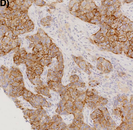
|
HER2 challenge contest: a detailed assessment of automated HER2 scoring algorithms in whole slide images of breast cancer tissues.
Histopathology. 72(2): 227-238. 2018. 
 abstract
abstract
Abstract: Aims Evaluating expression of the human epidermal growth factor receptor 2 (HER2) by visual examination of immunohistochemistry (IHC) on invasive breast cancer (BCa) is a key part of the diagnostic assessment of BCa due to its recognized importance as a predictive and prognostic marker in clinical practice. However, visual scoring of HER2 is subjective, and consequently prone to interobserver variability. Given the prognostic and therapeutic implications of HER2 scoring, a more objective method is required. In this paper, we report on a recent automated HER2 scoring contest, held in conjunction with the annual PathSoc meeting held in Nottingham in June 2016, aimed at systematically comparing and advancing the state-of-the-art artificial intelligence (AI)-based automated methods for HER2 scoring. Methods and results The contest data set comprised digitized whole slide images (WSI) of sections from 86 cases of invasive breast carcinoma stained with both haematoxylin and eosin (H&E) and IHC for HER2. The contesting algorithms predicted scores of the IHC slides automatically for an unseen subset of the data set and the predicted scores were compared with the ‘ground truth’ (a consensus score from at least two experts). We also report on a simple ‘Man versus Machine’ contest for the scoring of HER2 and show that the automated methods could beat the pathology experts on this contest data set. Conclusions This paper presents a benchmark for comparing the performance of automated algorithms for scoring of HER2. It also demonstrates the enormous potential of automated algorithms in assisting the pathologist with objective IHC scoring. 
@article{Qaiser18_HIS,
author = {Talha Qaiser and Abhik Mukherjee and Chaitanya Reddy PB and Sai D Munugoti and Vamsi Tallam and Tomi Pitkäaho and Taina Lehtimäki and Thomas Naughton and Matt Berseth and AnÃbal Pedraza and Ramakrishnan Mukundan and Matthew Smith and Abhir Bhalerao and Erik Rodner and Marcel Simon and Joachim Denzler and Chao-Hui Huang and Gloria Bueno and David Snead and Ian O Ellis and Mohammad Ilyas and Nasir Rajpoot},
journal = {Histopathology},
title = {HER2 challenge contest: a detailed assessment of automated HER2 scoring algorithms in whole slide images of breast cancer tissues},
year = {2018},
number = {2},
pages = {227--238},
volume = {72},
doi = {10.1111/his.13333},
}
|
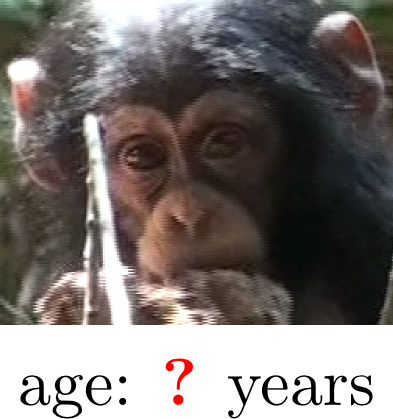
|
Active Learning for Regression Tasks with Expected Model Output Changes.
British Machine Vision Conference (BMVC). 2018. 
 abstract
abstract
Abstract: Annotated training data is the enabler for supervised learning. While recording data at large scale is possible in some application domains, collecting reliable annotations is time-consuming, costly, and often a project's bottleneck. Active learning aims at reducing the annotation effort. While this field has been studied extensively for classification tasks, it has received less attention for regression problems although the annotation cost is often even higher. We aim at closing this gap and propose an active learning approach to enable regression applications. To address continuous outputs, we build on Gaussian process models -- an established tool to tackle even non-linear regression problems. For active learning, we extend the expected model output change (EMOC) framework to continuous label spaces and show that the involved marginalizations can be solved in closed-form. This mitigates one of the major drawbacks of the EMOC principle. We empirically analyze our approach in a variety of application scenarios. In summary, we observe that our approach can efficiently guide the annotation process and leads to better models in shorter time and at lower costs. 
@inproceedings{Kaeding18_ALR,
author = {Christoph Käding and Erik Rodner and Alexander Freytag and Oliver Mothes and Björn Barz and Joachim Denzler},
booktitle = {British Machine Vision Conference (BMVC)},
title = {Active Learning for Regression Tasks with Expected Model Output Changes},
year = {2018},
}
|